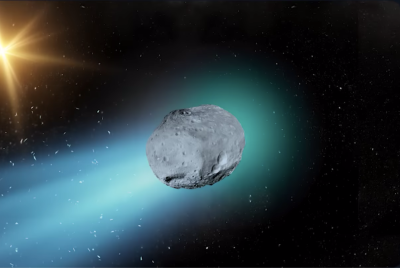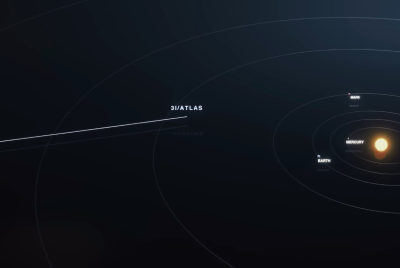3I/ATLAS 'Velocity Shift' Fuels 'Deployed Companions' Rumours
3I/ATLAS shows a mysterious 'velocity shift,' fueling rumours it may have deployed companion probes, while scientists debate its origin.

A dramatic twist in cosmic discovery is unfolding: new evidence suggests that 3I/ATLAS may have executed a velocity-shift manoeuvre and potentially deployed companion objects, reigniting speculation of a hidden agenda.
Unpacking the 'Velocity Shift'
Astrophysicist Avi Loeb has confirmed that 3I/ATLAS experienced a significant change in speed after its perihelion passage. According to recent reports, 'It did manoeuvre. The boost to its velocity was equivalent to a jet carrying five billion tons of matter.'
This behaviour is not typical of known comets. As one article noted, scientists say its trajectory and motion 'do not match anything typically seen within our solar system.'
Such anomalies have sparked questions over whether 3I/ATLAS is purely natural—or something far more mysterious.
🚨 3I/ATLAS Critical Update — Avi Loeb Confirms Velocity Shift & “Blueing” Event
— Astronomy Vibes (@AstronomyVibes) November 8, 2025
In a stunning update, Harvard astrophysicist Dr. Avi Loeb told Newsmax that the interstellar object 3I/ATLAS — now under congressional investigation — deviated from its predicted course after… pic.twitter.com/QWOtyH9XDa
A Possible 'Deployment' of Companions
Beyond its speed change, the object has sparked discussion about subsidiary objects. Rumours propose that 3I/ATLAS 'may have released smaller probes near Mars' orbit.' This scenario is being treated as more than fringe speculation.
As Loeb reportedly remarked, 'The key question is whether it deployed companions. We're treating this like a detective story.'
If true, these so-called 'deployed companions' could profoundly alter our understanding of the object's origin and purpose.
The Natural-Body Viewpoint
Not all scientists are convinced by the notion of deployment or artificial origin. The Economic Times reported that Physicist Brian Cox dismissed alien-craft theories around 3I/ATLAS as 'drivel,' stressing that 'Comet 3I/ATLAS is a comet, made of carbon dioxide and water ices and bits of other stuff. It is entirely natural in origin.'
Similarly, an IFL Science article reported that NASA's lead scientist for small bodies stated that although the object has 'some interesting properties,' the evidence overwhelmingly points towards a comet.
This divergence in viewpoints underscores the ongoing debate: natural rarity or engineered visitor?
Why the Timing and Location Raise Eyebrows
3I/ATLAS was discovered on 1 July 2025 by the ATLAS survey and is only the third interstellar object ever spotted entering our solar system.
Notably, its closest approach to the Sun (perihelion) occurred around 29 October 2025, at approximately 0.5 AU, placing it behind the Sun from Earth's vantage point, which limited our ability to observe any dramatic changes during that critical window.
The combination of a hidden perihelion, unusual jets (some directed sunward), and color shifts—particularly a 'blueing' effect—has added to the intrigue.
What the Deployment Theory Would Imply
If 3I/ATLAS truly released smaller objects, several possibilities arise. It could be a 'mothership' carrying probes, as suggested in theoretical work by Loeb.
These deployed companions might be on distinct trajectories yet to be observed or confirmed from Earth-based telescopes.
Such a scenario would radically shift the object's classification from a passive cosmic visitor to an active entity with purpose or engineering behind it.
Where Things Stand Now
The scientific community remains cautious. Many point out that despite the anomalies, the simplest explanation remains a natural cometary origin. The 'deployment' narrative is speculative and unproven at this point.
That said, the velocity shift and unusual behaviour make 3I/ATLAS one of the most compelling interstellar objects ever observed. Its closest approach to Earth on 19 December 2025 adds urgency to further monitoring.
The Verdict: Mystery or Misunderstanding?
At present, we are left between two narratives: one of a once-in-a-lifetime natural object, the other of a deliberately engineered visitor with potential companion releases.
Until further data confirms or denies the presence of deployed objects and explains the velocity anomaly, the rumours around 'deployed companions' will continue to ripple through both scientific and public discourse.
The cosmic story of 3I/ATLAS is far from over—and we may yet be witnessing one of the most unexpected arrivals in space history.
© Copyright IBTimes 2025. All rights reserved.





















